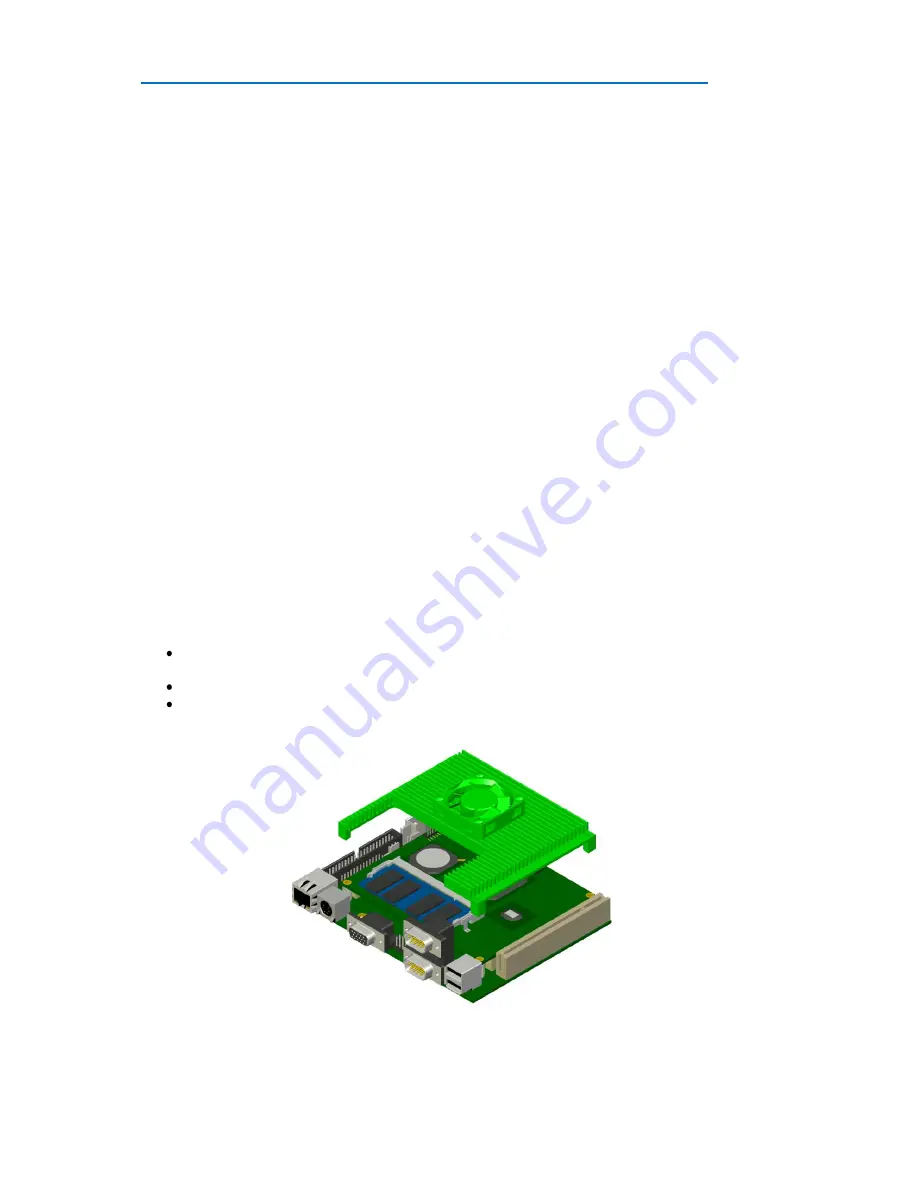
MAGNUM ETX
Installation
Page | 15
Cooling
Efficient cooling is essential for long and reliable operation of any electronic equipment. The VIA Eden/C7
CPU, the VIA CN700 Northbridge and VIA VT8237 Southbridge do get hot in normal operation, and in an
elevated ambient temperature will require additional cooling. Cooling requirements will vary with application,
desired operating temperature, CPU load, and memory size and board orientation.
Mounting the PCB vertically will aid natural convection and create a chimney effect. Passive heat sinks can be
used for the CPU, Northbridge and Southbridge. A fan, whilst not always desirable, will provide a high degree
of cooling even for a relatively slow airflow.
Further options that may be considered are sinking heat to the chassis or enclosure and in extreme situations the
use of a heat pipe.
The CPU is equipped with an onboard thermal diode for temperature monitoring. A thermistor is available to
monitor the temperature of critical and potential hot spots on the board. Temperatures can be monitored in the
BIOS Set-up. If you wish to monitor these temperatures from your application please contact the Blue Chip
Technology Technical Support team.
When designing an enclosure, bear in mind that the greater the volume of air that can flow through the
enclosure, the greater the cooling effect and the lower the temperature rise above the ambient air temperature.
However, the volume produced by any fan will vary with the pressure against which it has to work. The
resistance to airflow (the back-pressure on the fan) will depend upon the enclosure, the mounting and
restrictions. Therefore, when mounting and cabling the board, it is essential that the free circulation of the
cooling airflow is not impeded.
The calculation of airflow through an enclosure is not straightforward, and depends on many factors. The
method of meeting the cooling requirements will be specific for each system. Consequently, the system builder
is responsible for ensuring adequate cooling. However, interpreting airflow volumes is not intuitive. As an aid
to selecting suitable cooling, the following example is offered. A 60 mm axial fan (such as a Papst type
612NGH) blowing over the board can supply up to 46 m
3
/hour when unrestricted. Restrictions to the airflow
will reduce this volume.
Blue Chip Technology offers several cooling solutions to help manage cooling:
Heat plate designed to allow contact with a larger cooling area such as direct contact with a metal
enclosure
A passive finned heatsink
An active solution based on the finned heatsink with a fan (12 m
3
/hour) attached
Figure 4: Position Heatsink above daughter board






































